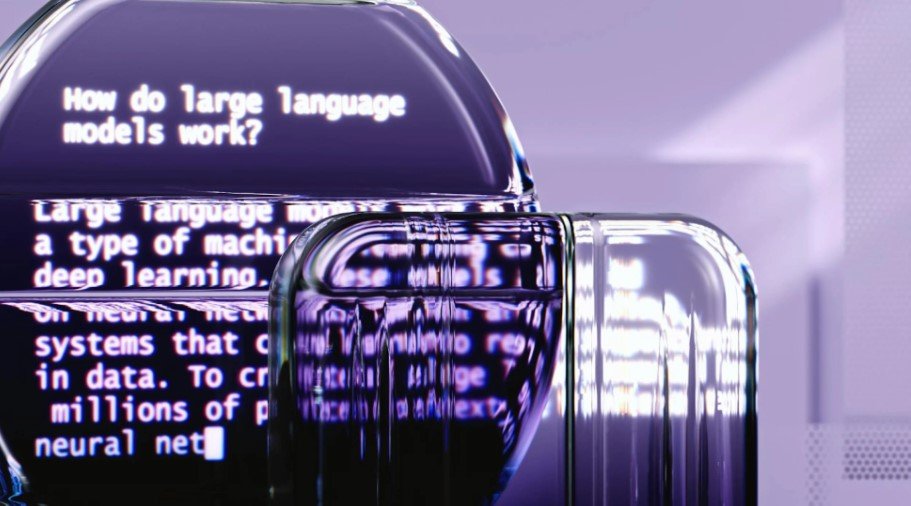Tech
Why AI Engineers Now Need to Think Like Cloud Architects

AI isn’t something you just run on a laptop anymore. It works across networks, across tools, and across locations. These systems run in the cloud now. They deal with more data and serve results at a much faster pace.
To keep up, AI engineers can’t think in silos. They need to understand how their models behave once deployed. They need to design with scale, speed, and stability in mind—just like a cloud architect would.
AI and the Cloud: No Longer Separate Worlds
Years ago, AI work stayed local. You wrote code, trained your model, and maybe exported it. That’s not enough anymore.
Modern AI powers apps, services, and decisions in real time. It relies on fast infrastructure and flexible platforms. Most of that now lives in the cloud.
Cloud tools from providers like AWS, Azure, and Google Cloud are where AI lives and grows. So knowing how these systems work isn’t a bonus. It’s expected.
Why Cloud-Native AI Is Becoming the Default
More teams now build AI systems directly in the cloud. It’s faster, cleaner, and easier to manage.
There’s no need for local servers. Engineers can open a dashboard, pick the tools they need, and get to work. They can also pause or delete resources when they’re done—no wasted costs.
Many cloud platforms include tools for version control, system logs, and alerts. This helps teams test, improve, and update models more smoothly.
Cloud setups are also great for remote teams. Work can start in one city and finish in another. And models can be shared or deployed globally with minimal effort.
At this point, cloud-native setups aren’t cutting edge. They’re just how things get done.
The Cloud Has Become the Foundation
Most real AI systems don’t run on personal computers anymore. They run on cloud platforms. These platforms support every part of the process:
- Loading and cleaning data
- Training large models
- Hosting APIs
- Tracking errors and updates
- Keeping costs under control
If you’re building models without considering cloud tools, you’re working with one hand tied behind your back.
What AI Engineers Can Learn from Cloud Architects
1. Thinking in Systems
AI models don’t live in isolation. They are part of larger pipelines. A cloud architect designs systems with multiple components talking to each other. AI engineers should do the same.
Think in terms of pipelines that include:
- Data sources (structured, unstructured, streaming)
- Transformation layers
- Model APIs
- Feedback loops
Orchestrating AI workloads helps glue these components together. It’s not just about writing smart models—it’s about placing them in smart systems.
2. Cost and Resource Planning
Cloud bills grow fast. Cloud architects are trained to think about compute cost, storage pricing, and network usage.
AI engineers need to:
- Select the right compute instances
- Reduce idle GPU hours
- Optimize training time
- Archive unused datasets
Efficient systems save time and money. They also scale better.
3. Security and Compliance Awareness
AI workloads often handle personal or sensitive data. Engineers must now consider encryption, access policies, and regulatory compliance.
This used to be an IT concern. Now it belongs to the AI team too.
4. Scalability and Deployment Patterns
Cloud architects use patterns like microservices, containers, and serverless functions to build scalable apps. These same ideas help AI engineers push their models to production.
Consider:
- Dockerizing model APIs
- Using Kubernetes for orchestration
- Deploying on serverless endpoints for low-latency responses
These patterns don’t just improve performance. They also simplify versioning, rollback, and testing.
The Rise of Hybrid Roles
A growing number of job postings now seek hybrid skill sets: “AI/ML Engineer with Cloud DevOps Experience” or “Data Scientist with AWS Proficiency.”
Why? Because organizations want people who can own the entire ML lifecycle. That includes:
- Building the model
- Deploying it
- Monitoring it
- Scaling it
You won’t be able to do that if you’re thinking only like a data scientist.
MLOps: Bridging the Gap Between AI and Cloud Engineering
MLOps is where AI engineering and cloud thinking come together. It’s the practice of managing machine learning models throughout their lifecycle—from data preparation and training to deployment and monitoring. And it relies heavily on cloud infrastructure.
Through automation and version control, MLOps reduces friction. It lets AI teams iterate faster and recover quickly from mistakes. Instead of treating models like static assets, MLOps treats them as evolving components, just like software code.
The best part? MLOps tools often use familiar cloud-native patterns. Pipelines are built using containers, workflows run on Kubernetes, and logs stream into centralized dashboards. For engineers who think like cloud architects, MLOps offers a natural workflow that blends experimentation with operational stability.
From Proof-of-Concept to Production
Many engineers can build a model that works in a notebook. But production is different. It means:
- Handling high traffic
- Serving predictions within milliseconds
- Preventing system failures
Cloud architecture skills turn your ML code from a prototype into a product.
Building AI with Infrastructure as Code (IaC)
Cloud-native development often begins with infrastructure written in code. AI engineers can benefit from tools like Terraform or AWS CloudFormation to define environments, manage permissions, and spin up cloud resources.
Using IaC makes it easier to track changes, clone environments, and collaborate with others. For AI projects, it means faster experiments and more stable deployments.
Disaster Recovery and Model Redundancy
What happens when a prediction service crashes or a zone goes down? Cloud architects plan for these scenarios, and AI engineers should follow suit.
You can reduce risk by deploying across regions, setting up failover endpoints, and using redundancy patterns like active-passive or active-active.
Even models benefit from disaster recovery: hot-swapping versions, backing up training data, and testing rollback paths can save time and revenue.
Understanding Service-Level Agreements (SLAs)
SLAs define how well a service must perform. In AI, this includes things like prediction accuracy, latency targets, and system availability.
Understanding these contracts helps AI engineers build systems that meet business expectations. If an API must respond in under 100ms, you might need to rethink your model complexity or deployment method.
SLAs also help teams decide when to retrain models, fix bugs, or reallocate resources.
Monitoring and Observability
Cloud engineers obsess over uptime and performance. AI engineers need to follow suit.
This includes:
- Logging input and output for each prediction
- Tracking model accuracy over time
- Setting up alerts for drift or failure
Security teams also want visibility. Solutions with advanced SIEM features help monitor suspicious patterns in AI pipelines.
Why Now?
The shift is happening fast. AutoML tools and low-code platforms have made model building easier. The new frontier is deployment and lifecycle management.
Companies don’t need more notebooks. They need reliable, cloud-native AI systems.
Skills Every AI Engineer Should Add Now
Here’s what’s becoming essential:
- Cloud platform knowledge: AWS, Azure, GCP basics
- Containers and orchestration: Docker, Kubernetes
- CI/CD pipelines: For rapid model iteration
- Monitoring and logging tools: Prometheus, Grafana, ELK stack
- Cost estimation: Tools to predict and control cloud spend
- Data pipeline management: Airflow, Dataflow, and similar
You don’t need to be an expert in everything. But you do need to speak the language.
Toolchains That Blend AI and Cloud Thinking
Some tools naturally encourage both AI innovation and cloud-scale deployment. Learning how they fit together can boost both productivity and reliability.
For instance, you can build models with TensorFlow or PyTorch, train them on Google’s Vertex AI or Amazon SageMaker, containerize them with Docker, and deploy with Kubernetes or serverless frameworks. Need infrastructure? Use Terraform to define it as code. Need to track experiments and versions? MLflow or Weights & Biases can help.
Each of these tools serves a different layer, but together they form a bridge between research and production. AI engineers who adopt this type of toolchain aren’t just writing code—they’re shaping systems that are built to scale.
Rethinking Team Structures
Organizations are also restructuring. Instead of separating AI from infrastructure, teams are now integrated. AI engineers work alongside DevOps, cloud engineers, and product teams.
This setup creates faster deployment cycles and fewer handoff issues.
Common Mistakes When AI Engineers Ignore Cloud Design
Skipping cloud design can cause real trouble. Here are some of the most frequent missteps:
- No autoscaling or load balancing – This often leads to traffic spikes crashing your model or slowing down performance for users.
- Leaving GPU instances running too long – Without cost monitoring, this burns through cloud budgets quickly.
- Skipping security checks – Relying on default settings or assuming someone else handled it can expose sensitive data.
- Deploying to a single region – This increases the risk of downtime and latency for users in other parts of the world.
- Treating infrastructure as an afterthought – Focusing only on the model without considering the environment weakens overall system reliability.
Most of these aren’t about model quality—they’re about the ecosystem around it. Thinking like a cloud architect helps you build smarter, safer systems.
Final Thoughts
Being great at building models isn’t enough. To succeed today, AI engineers must understand the systems that carry their models into the world. Thinking like a cloud architect doesn’t mean switching careers. It means upgrading your mindset. The most impactful engineers are those who can bridge both domains.
Start with the basics: understand how your model runs in production. Then learn how to improve its speed, cost, and reliability. That’s how you stay ahead.
-

 Social Media2 months ago
Social Media2 months agoWhat the “67” TikTok Meme Really Means
-

 Tech2 months ago
Tech2 months agoWhat To Do When Your Business Faces Network Vulnerabilities
-

 Self Improvement2 months ago
Self Improvement2 months agoUsing BCBS Rehab to Access Quality Addiction Care
-

 Games2 months ago
Games2 months agoPusoy Strategies for Play That Also Work in Pusoy Dos in English






